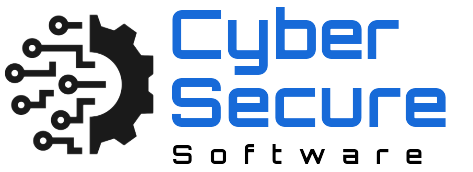Building a New Cyber Security Software System for Your Business — Questions to Ask Yourself
Cyber Security Software is the right destination to understand that developing a strong secure software system is one of the key components for your business growth. When starting out building your next cyber-secure software, you should ask the right type of questions, and make sure you build the right features into your system to ensure your systems are free from threats and also compared with your business goals.
Here are some essential questions to keep in mind:
- 1. What Are the Primary Objectives of the Software?
- Clearly state what you hope to accomplish with your new software system before you get technical. Are you trying to simplify operations, boost customer experience, or optimize data handling? Knowing what you want to accomplish will inform the development flow, and let you focus on security features relevant for your business.
- 2. Who Is the Main Audience and What Do They Need?
- Determine who will be using the software and what they will need from it. Answer: Different user roles may require different access levels and security measures. Administrative users, for example, may need wider access than normal users, This is how you are going to design a system that meets the requirements of functionality and security controls.
- 3. What Are the Risks and Vulnerabilities?
- Perform a risk assessment to pinpoint relevant threats and vulnerabilities associated with your software. These may include issues like data breaches, malware, and insider threats. This understanding will allow you to implement targeted security measures, and prepare for potential scenarios that can impact your business.
- 4. What Data Will the Software Process and How Will it Be Secured?
- Identify the kind of data your software will handle, which could include sensitive information like personal identification numbers, financial records, or proprietary business data. Follow with encryption, access controls, and secure data storage practices to secure this data from unauthorized access and breaches.
- 5. What Are The Compliance Requirements That The Software Should Meet?
- Various sectors have their own rules and guidelines for data protection and confidentiality. Identify relevant compliance requirements (GDPR, HIPAA, or PCI-DSS) and make sure your software is compliant. Failure to comply can lead to regulatory changes whereby you incur legal and financial penalties, so it is it imperative to integrate these requirements in your development process.
- 6. How Will You Handle User Authentication and Authorization?
- User authentication and authorization are core requirements in the security of software applications. Don’t forget to: Choose ways to verify users’ identities (e.g., MFA), and define role-based restricted access controls — which ensure users can access only as much information and what functions they need to perform their roles.
- 7. What’s Going to Be the Plan for Ongoing Updates and Patching?
- Other cyber threats evolve quickly, which is why you must have a plan for regular software updates and patching. Implement a routine for reviewing vulnerabilities, patching, and updating software components to handle new dangers and maintain security.
- 8. How Will You Monitor and Respond to Security Breaches?
- Be prepared to monitor Forensics pattern: You should create a plan to monitor your software system for suspicious activities and/or possible security incidents. Detect Anomalies by implementing Logging & Alerting Mechanisms Have an incident response plan to detect and remediate each security breach.
- 9. What Are the Long-Term Maintenance and Support Plans?
- Remember to account for the long-term maintenance and support requirements of your software system. But regular maintenance is critical for troubleshooting, feature updates, and the ongoing security of the system. Determine what support will consist of, such as response times, responsibilities, etc., so you know that you are able to address any problems in a timely manner.
- 10. How Will You Train Users on Security Best Practices?
- A key aspect to continue a secure software setting is user education. User awareness programsSecurity awareness programs are designed to educate users on what is considered best practice. The most effective way to reduce security risks is by enabling users to eliminate risks themselves.
- 11. How Much Is the Budget and Resource Allocation?
- To develop and sustain a secure software stack, you have to pump resources into it. Understanding how much you want to invest sets apart each development stage, security features, maintenance, and training. Make sure you have the necessary financial and human resources to facilitate the success of this project.
- 12. How Will the Software Fit into Current Systems?
- Establish system integration Plan how the new software will work with your existing systems and infrastructure. With seamless integration, other functionalities can be added without too much disruption of operations. Train it to topics, dates, times, and information that does not become outdated.
Conclusion
It is a complicated yet important endeavor to build a new cyber-securing software system. By asking these essential questions, you can make sure that your system is functional and aligned with your company goals and also resilient to threats. What you need to know is that here at Cyber Security Software, we are with you every step of the way, ensuring you construct that software product you came up with that is secure, reliable, and most of all effective.
Thank you for using our service. Rest assured your business is secure, and we are dedicated to ensure a secure amazing software system for you.
